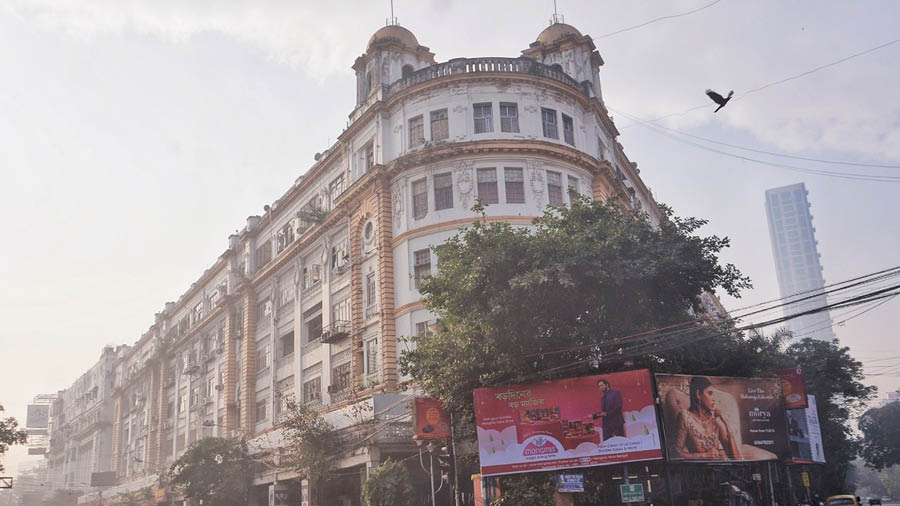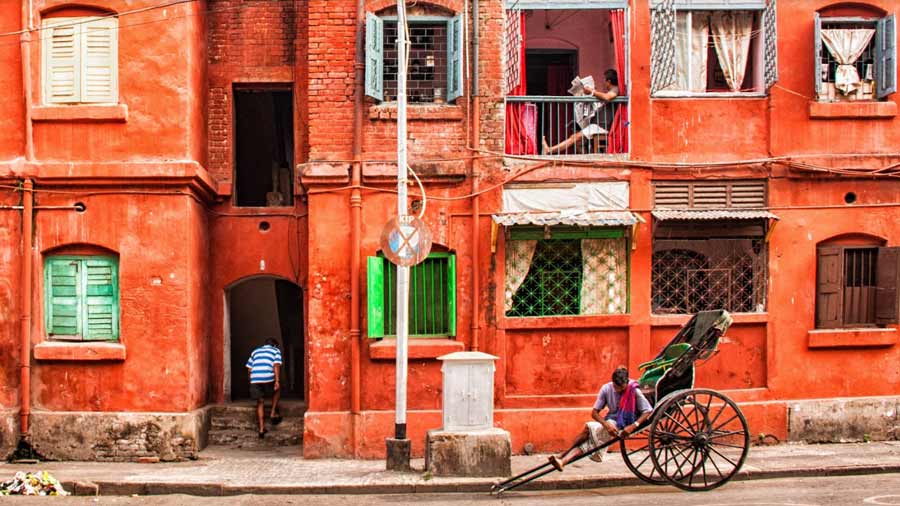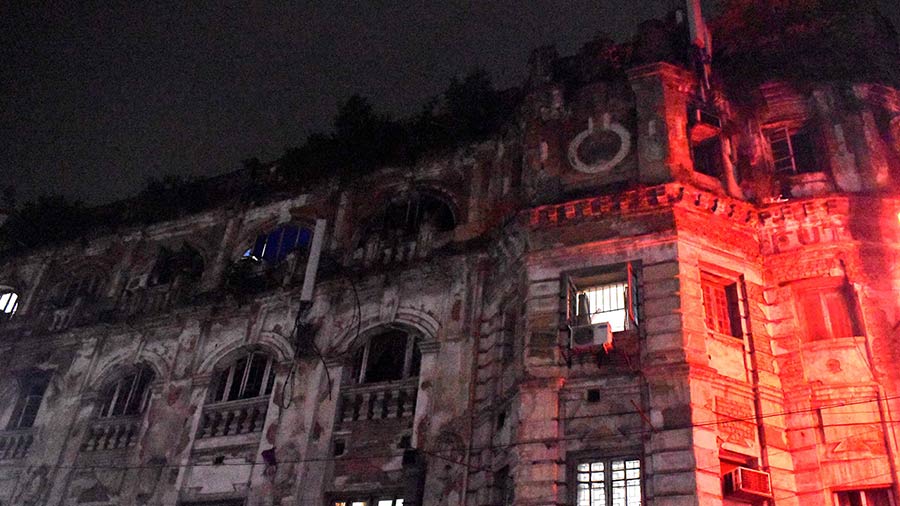On a cold winter morning, a fortnight before Christmas, My Kolkata took a walk down memory lane, revisiting tales of Park Street during its heyday, before it metamorphosed into a dine-dance-drink corridor. A three-hour trot around the street on Calcutta Heritage Collective’s annual ‘Once Upon a Time in Park Street’ heritage walk spearheaded by explorer Navpreet Arora, a member of the collective and owner of Fun on Streets, rediscovered nuggets from the past — some notable, some notorious.
The walk began at The Asiatic Society and ended at the South Park Street Cemetery with a detour towards Camac Street to sneak a peek at Arathoon Stephen’s architecture. A few gems from the walk…

St Xavier’s College on Park Street
What was Park Street known as once upon a time?
Gorasthan Chowringhee ka raasta.
The earliest name of the street was Badamtala, on account of the road being punctuated with a number of almond trees. It was later changed to Burial Ground Road aka gorasthan Chowringhee ka raasta. “Park Street at the time was a marshy jungle and the area around where Fort William stands today was known as the ‘White Town’, which was built specifically for the British,” said Arora.
She told us that the tale behind the cemeteries being positioned far away from the ‘White Town’ was so that funeral processions wouldn’t take place in the main city. In 1757, Park Street, as we now know it, was considered to be the outskirts of the city. “Most Britishers couldn’t survive more than two monsoons in the City of Joy, which resulted in many untimely deaths and burial grounds being built, all on the outskirts of the city,” she said.
Have you wondered why it was called Park Street?
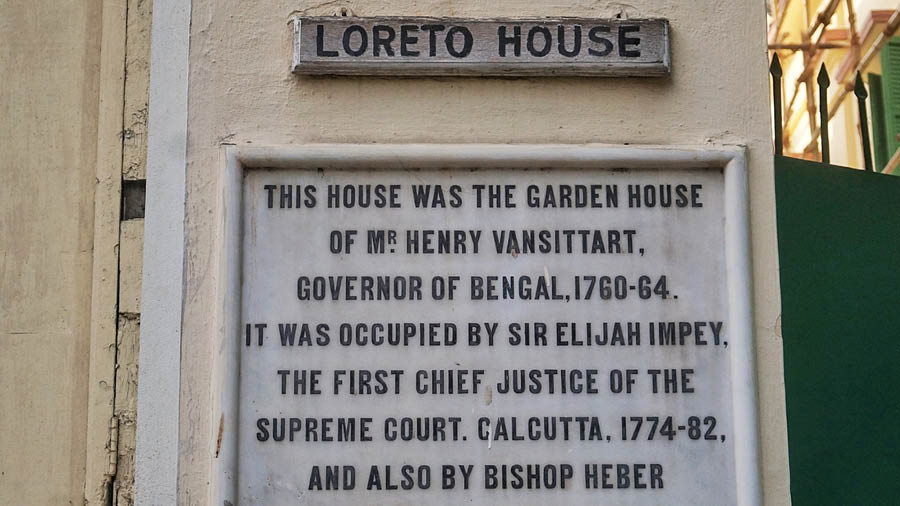
Loreto House once had a deer park
The answer lies where Loreto House stands today. “It was the only house in the area and had a huge deer park around it. That’s where Park Street got its name — not from Allen Park!” clarified Arora. The house was the garden house of Henry Vansittart, the governor of Bengal from 1760 to 1764 and was later occupied by Elijah Impey, the first chief justice of the Supreme Court of Judicature at Fort William — British India’s highest court at one time.
How did ‘Flury & Trinca’ become ‘Trincas’ and ‘Flurys’?

That Trincas and Flurys have a historical connection that dates back to the British Calcutta of 1927 is a well-known fact. Mr. Trinca and Mr. Flury were business partners, who joined hands to start a Swiss confectionery and tea room on Park Street — Flury & Trinca — that was salient to the street in the 1930s.
So, why did the tea room break up?
“Legend goes that Mr. Flury ran away with Mrs. Trinca,” laughed Arora, explaining that this is merely an old wives’ tale and not a fact.
Do you know about the gas lamp in Queens Mansion that once lit Park Street?
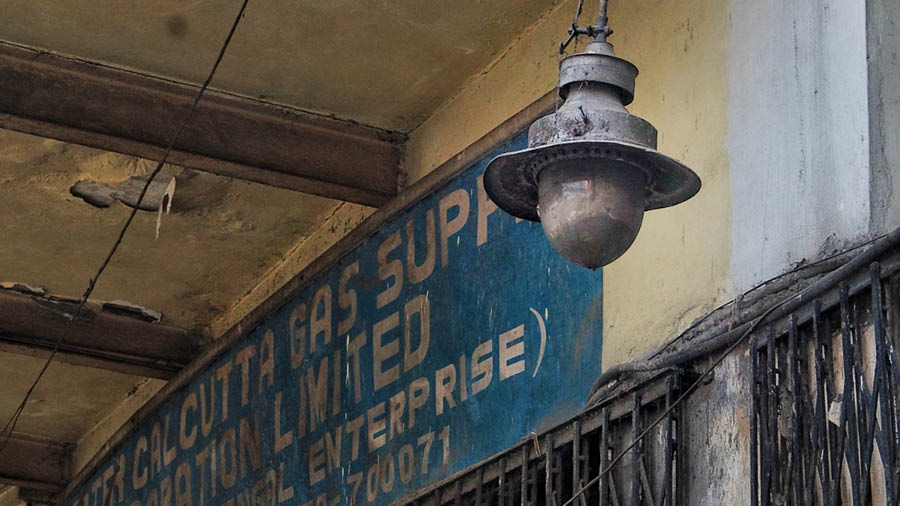
The footpath in front of Queens Mansion still has one of the gas lamps that once lit up ‘Calcutta’
On the footpath in front of Queens Mansion, at the corner plot house previously known as Galstaun Mansion, is a gas lamp from the days when the city’s streets were lit by them. “We’ve all heard the stories about Ishwar Chandra Vidyasagar studying under the gas lamp, did you ever wonder where the gas came from? The central unit that dispersed the gas was at Queens Mansion on Park Street,” said Arora.
The Greater Calcutta Gas Supply Corporation Limited is housed on the ground floor of the mansion and its interiors — broad, wooden staircases, large metal beams and marble flooring — are still intact. You’ve probably walked by this spot hundreds of times, but this dangling gem never really catches one’s eye.
Where can you spot ‘old Calcutta’ in Stephen Court?
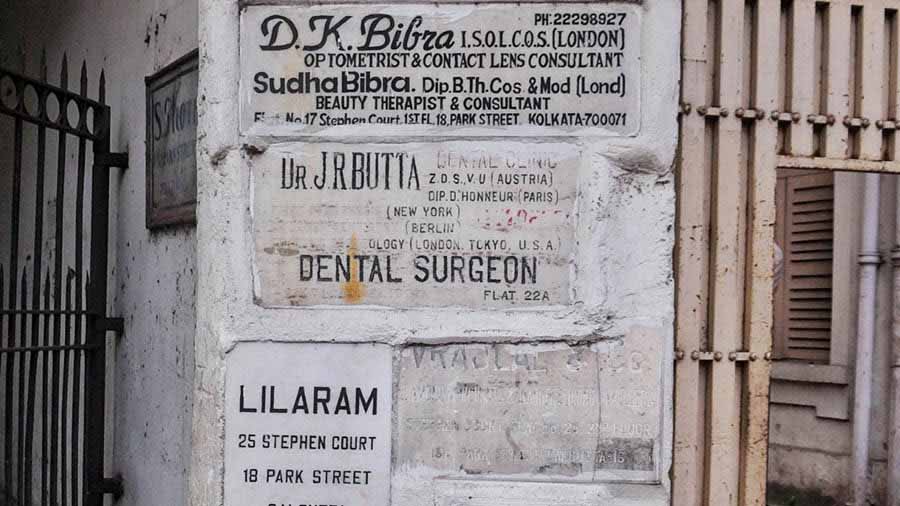
Plaques of old addresses at Stephen Court still have the city as ‘Calcutta’ not Kolkata
Possibly one of the oldest buildings in the city, one with a storied history surrounding both the building and the man who built it, Stephen Court is an established landmark whose history is well-known, and well-revised after the fire of 2010.
Did you know that a smidgen of that history still sits on its walls?
“This is one of the points on Park Street that keeps the spirit of ‘Calcutta’ alive,” said Arora, pointing out that Stephen Court’s addresses still carry ‘Calcutta’ on them and not Kolkata.
Do you know the average age on the tombstones at South Park Street Cemetery?
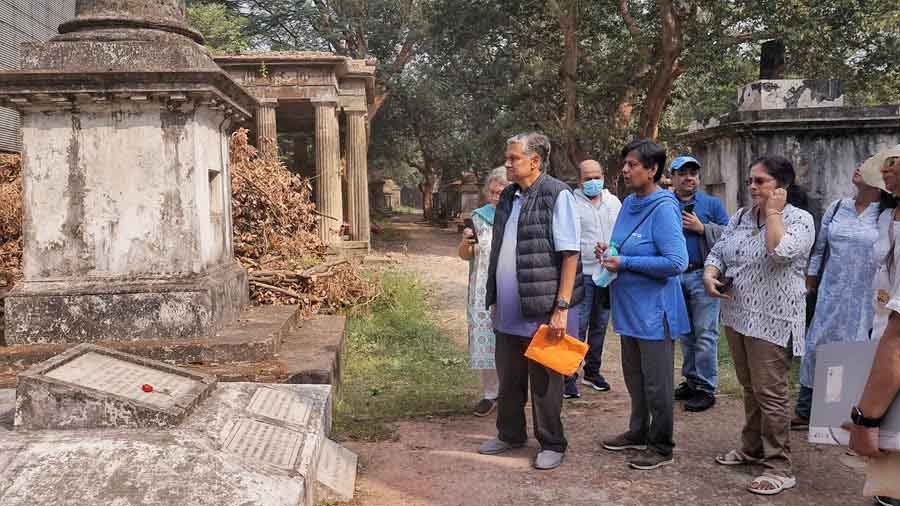
South Park Street Cemetery is the final resting place of many notable people including the second son of Charles Dickens
Arora told us that young Englishmen would come to settle in Kolkata because it was more lucrative. “One could earn 300 pounds a year in Kolkata, in comparison to 11 pounds in Europe,” she said. “However, they found it very hard to survive in our climate and most of them passed away at a very young age.”
We walked through South Park Street Cemetery to discover that the average age on the tombstones was a mere 23. Among the beautiful inscriptions we came across, two stood out with the tender age of 22 chiselled in — Henry Louis Vivian Derozio, who was a pioneer of the Indian Renaissance in the 19th century, and Walter Landor Dickens, the second son of novelist Charles Dickens.
“Even though we know so much about this street, there’s always something left to discover and if not, rediscovering the past is always a pleasure,” smiled Arora, as the walk culminated.
The information in this article is based on what was shared on the walk. Calcutta Heritage Collective has more walks scheduled in December and January. Get the details here.
